Blog
Welcome to Heaven And Homes
We make your home as unique and beautiful as the people living in it.

Avoid costly mistakes. Get guidance from a design expert.
Modern Furniture UK: Complete Guide
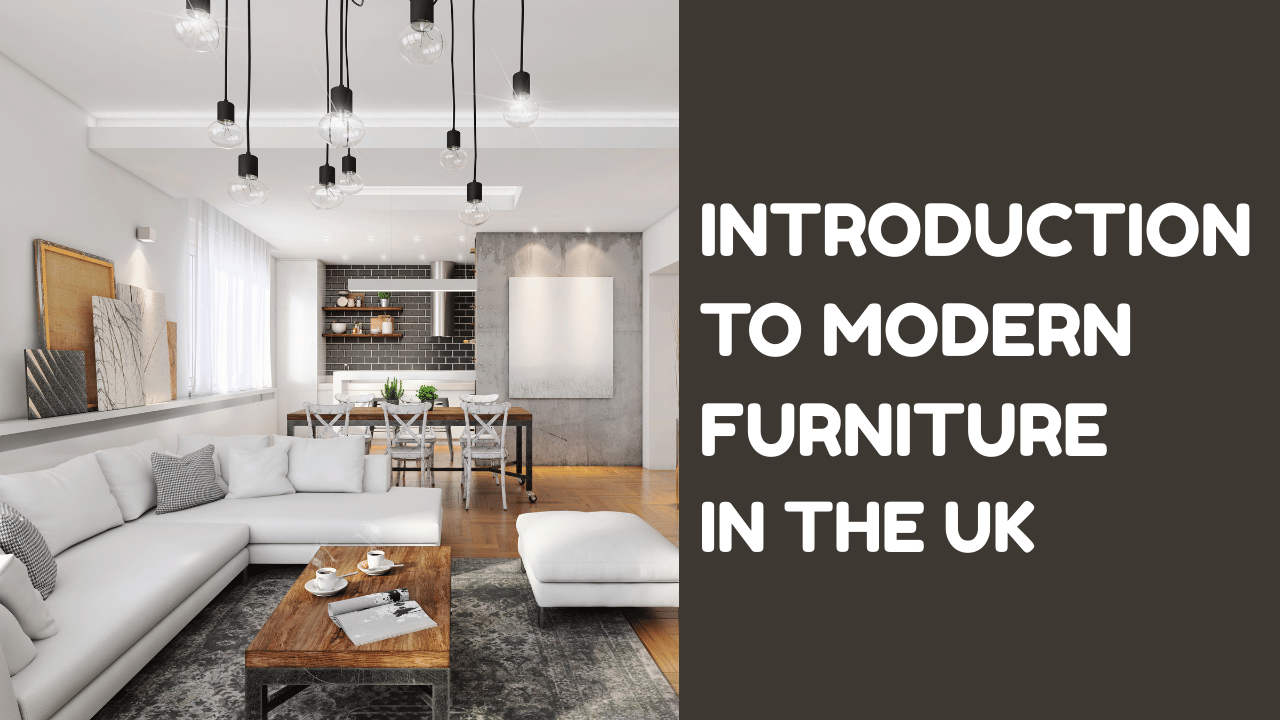
Table of Contents
Introduction to Modern Furniture in the UK
Modern furniture in the UK is more than just a style; it’s a reflection of contemporary living, blending aesthetic appeal with practical functionality. As homes evolve, so does the demand for furniture that not only looks good but also serves multiple purposes, optimizes space, and aligns with sustainable values.
This guide delves into the essence of modern furniture in the UK, exploring its defining characteristics, popular trends, and how it caters to the diverse needs of British households. From minimalist designs that maximize small urban apartments to versatile pieces that adapt to dynamic family lives, modern furniture offers solutions that resonate with the modern homeowner. We will explore how to choose pieces that enhance your living spaces, reflect your personal style, and contribute to a more sustainable future.
Defining Modern Furniture: Beyond the Basics
Modern furniture is often confused with contemporary furniture, but while both are current, modern design specifically refers to a period from the late 19th to mid-20th century, characterized by a rejection of traditional ornate styles in favor of clean lines, natural materials, and functional forms.
In the UK, this translates into pieces that prioritize simplicity, utility, and an uncluttered aesthetic. Key characteristics include:
- Clean Lines and Minimalist Forms: A hallmark of modern design, emphasizing simplicity and absence of excessive ornamentation.
- Natural Materials: A preference for wood, metal, glass, and leather, often in their raw or minimally processed states, highlighting their inherent beauty.
- Functionality: Every piece serves a purpose, often multi-functional, designed to optimize space and enhance daily living.
- Neutral Color Palettes: Typically featuring whites, greys, blacks, and earthy tones, with occasional pops of color.
- Open Spaces: Furniture is designed to complement open-plan living, creating a sense of spaciousness and flow.
This approach to design is particularly well-suited to the varied housing landscape of the UK, from compact city flats to more expansive suburban homes, offering adaptable solutions that enhance both aesthetics and liveability.

The Evolution of Modern Furniture in the UK
The journey of modern furniture in the UK has been influenced by global design movements and local adaptations. Post-World War II, there was a significant shift towards practicality and affordability, leading to the rise of mass-produced, functional furniture.
The mid-century modern movement, with its iconic designers and emphasis on organic shapes and new materials, also left an indelible mark. In recent decades, the focus has expanded to include sustainability, ethical sourcing, and technological integration, reflecting a growing consumer awareness and demand for responsible production.
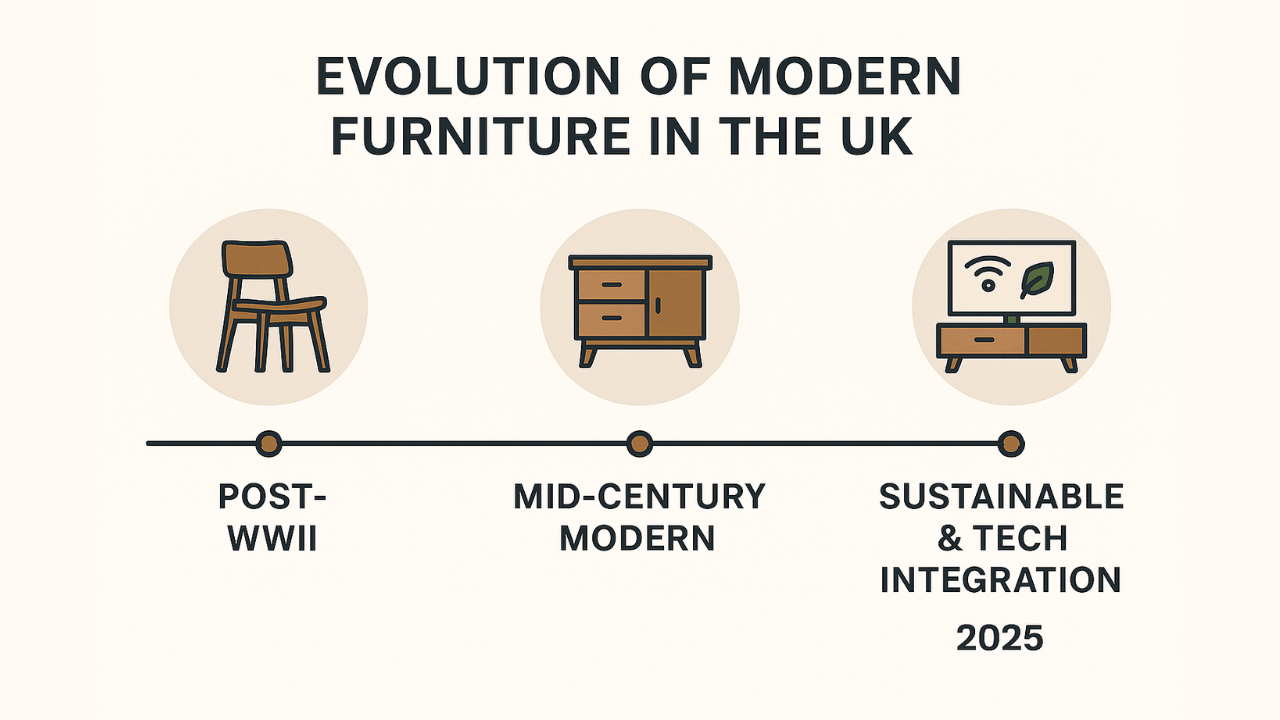
Today, UK modern furniture blends these historical influences with contemporary concerns, offering a diverse range of styles that cater to a discerning market. The emphasis is increasingly on longevity and timeless design, moving away from fast furniture towards pieces that are built to last and can be cherished for generations.
Key Trends in Modern UK Furniture 2025
As we move into 2025, several key trends are shaping the modern furniture landscape in the UK:
- Sustainable and Eco-Friendly Materials: A growing demand for furniture made from recycled, reclaimed, or sustainably sourced materials. This includes FSC-certified wood, recycled plastics, and natural fibers like linen and hemp. Consumers are increasingly conscious of the environmental impact of their purchases, driving manufacturers to adopt more responsible practices.
- Multi-functional and Space-Saving Designs: With urban living spaces often being compact, furniture that serves multiple purposes (e.g., sofa beds, extendable dining tables, storage ottomans) continues to be highly sought after. Modular designs that can be reconfigured to suit different needs are also gaining popularity.
- Biophilic Design: Bringing the outdoors in, this trend incorporates natural elements, organic shapes, and earthy color palettes to create calming and harmonious interiors. Think wooden furniture with live edges, botanical prints, and indoor plants integrated into furniture designs.
- Smart Furniture Integration: Technology is increasingly being integrated into furniture, from charging ports in sofas to smart lighting in bedside tables. This trend focuses on enhancing convenience and connectivity within the home.
- Textural Richness: While clean lines remain, there’s a growing appreciation for tactile materials and varied textures, such as boucle fabrics, ribbed wood, and brushed metals, adding depth and warmth to minimalist spaces.
- Curved Forms: A move away from rigid, straight lines towards softer, more organic curves in sofas, chairs, and tables, creating a more inviting and comfortable aesthetic.
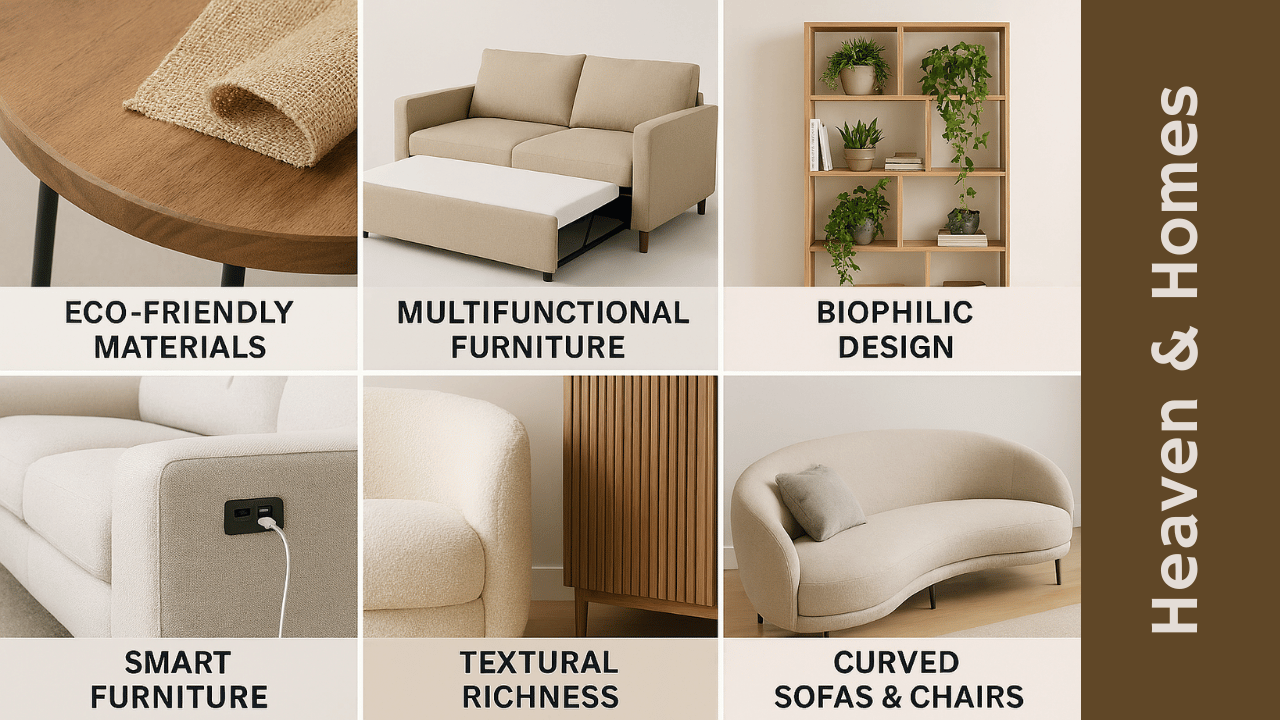
These trends reflect a broader shift towards conscious consumption, well-being, and adaptability in home design, making modern furniture in the UK both stylish and highly relevant to contemporary lifestyles.
Choosing Modern Furniture for Different UK Home Types
The diverse housing landscape in the UK necessitates a tailored approach to choosing modern furniture. Whether you live in a Victorian terrace, a new-build apartment, or a rural cottage, modern furniture can be adapted to suit your space and lifestyle.
- Urban Apartments: For compact city living, prioritize multi-functional pieces like sofa beds, nesting tables, and vertical storage solutions. Opt for lighter colors and reflective surfaces to create a sense of spaciousness. Modular furniture is ideal for adapting to changing needs.
- Suburban Family Homes: These homes often offer more space, allowing for larger statement pieces. Focus on durable, family-friendly materials and versatile layouts that can accommodate various activities. Open-plan living areas benefit from furniture that defines zones without creating barriers.
- Period Properties: Modern furniture can beautifully complement the architectural features of older homes, creating a striking contrast. Choose pieces with clean lines and classic materials that respect the original character while adding a contemporary touch. Mixing old and new creates a unique and sophisticated aesthetic.
- Rural Cottages: Embrace natural materials and biophilic design elements to blend with the surrounding environment. Comfortable, inviting pieces in earthy tones can create a cozy yet modern feel. Focus on maximizing natural light and views.
Understanding the architectural style and spatial constraints of your home is crucial for selecting modern furniture that not only fits but also enhances your living environment. The goal is to create a cohesive and harmonious space that reflects your personal taste and meets your functional requirements.
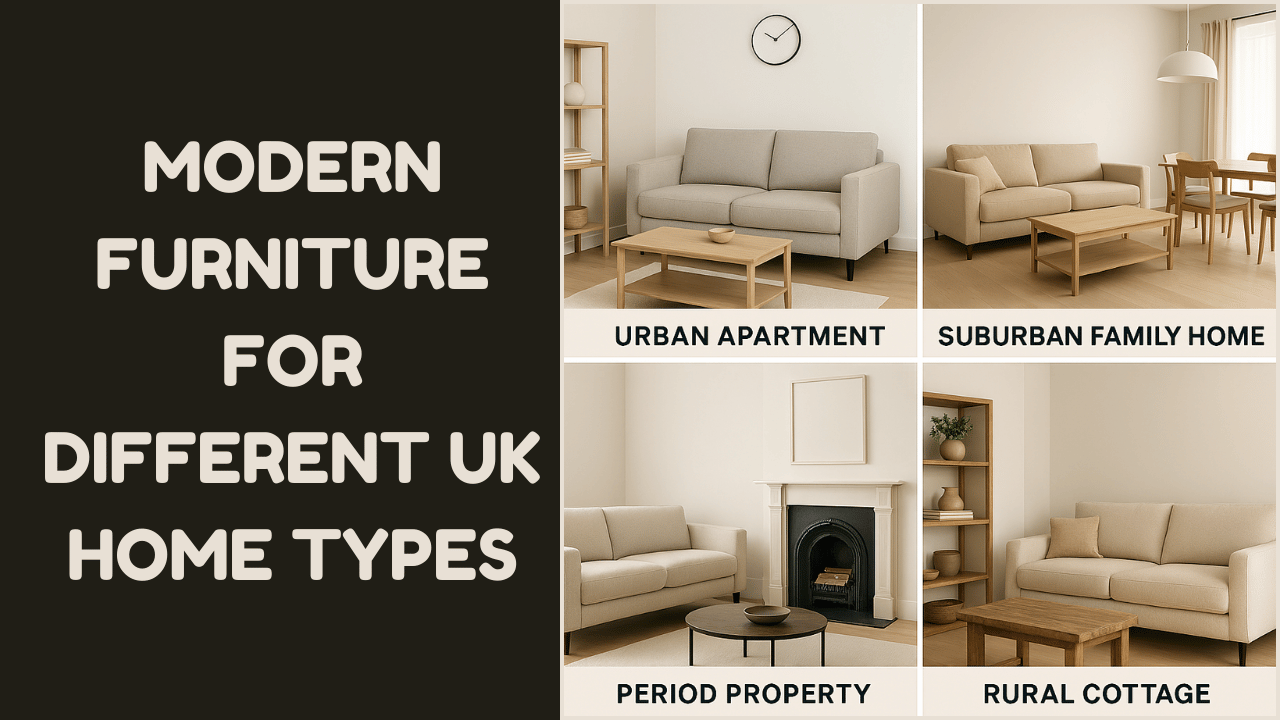
Materials and Craftsmanship in Modern UK Furniture
The quality of materials and craftsmanship is paramount in modern furniture, ensuring longevity and enduring appeal. In the UK, there’s a strong emphasis on both traditional techniques and innovative material use.
- Wood: Solid wood (oak, walnut, ash) is highly valued for its durability and natural beauty. Engineered wood products are also used for stability and sustainability. Finishes often highlight the natural grain.
- Metal: Steel, iron, and aluminum are used for frames, legs, and accents, providing strength and a sleek, industrial aesthetic. Popular finishes include brushed, polished, and matte black.
- Glass: Used for tabletops, shelves, and decorative elements, glass adds lightness and a sense of openness. Tempered glass is preferred for safety and durability.
- Upholstery: Fabrics like velvet, linen, and wool are popular for their texture and comfort. Leather, both genuine and vegan, offers a luxurious and durable option. Sustainability is a growing consideration, with demand for organic and recycled fabrics.
- Craftsmanship: Many UK furniture makers pride themselves on artisanal quality, combining traditional joinery with modern manufacturing techniques. This ensures precision, durability, and attention to detail, resulting in pieces that are built to last.
Investing in well-crafted modern furniture means choosing pieces that will withstand the test of time, both in terms of durability and style. The combination of high-quality materials and expert craftsmanship ensures that your furniture remains a cherished part of your home for years to come.

The Role of Color and Texture in Modern Interiors
While modern design often favors neutral palettes, the strategic use of color and texture can significantly enhance the aesthetic and create a more inviting atmosphere. In UK homes, this often involves subtle yet impactful choices.
- Neutral Foundations: Whites, greys, and muted earthy tones form the base, providing a calm and sophisticated backdrop. This allows other elements to stand out without overwhelming the space.
- Accent Colors: Pops of color can be introduced through accessories, artwork, or a single statement furniture piece. Popular choices include deep blues, forest greens, mustard yellows, and terracotta, adding personality and warmth.
- Textural Contrast: Layering different textures adds depth and visual interest. Combine smooth metals with rough wood, soft velvets with crisp linens, or polished glass with woven rugs. This creates a tactile experience that makes a minimalist space feel rich and inviting.
- Monochromatic Schemes: Using varying shades of a single color can create a sophisticated and cohesive look, relying on texture to provide distinction between elements.
By thoughtfully integrating color and texture, modern interiors in the UK can achieve a balance between sleek simplicity and comfortable warmth, creating spaces that are both visually appealing and highly liveable.
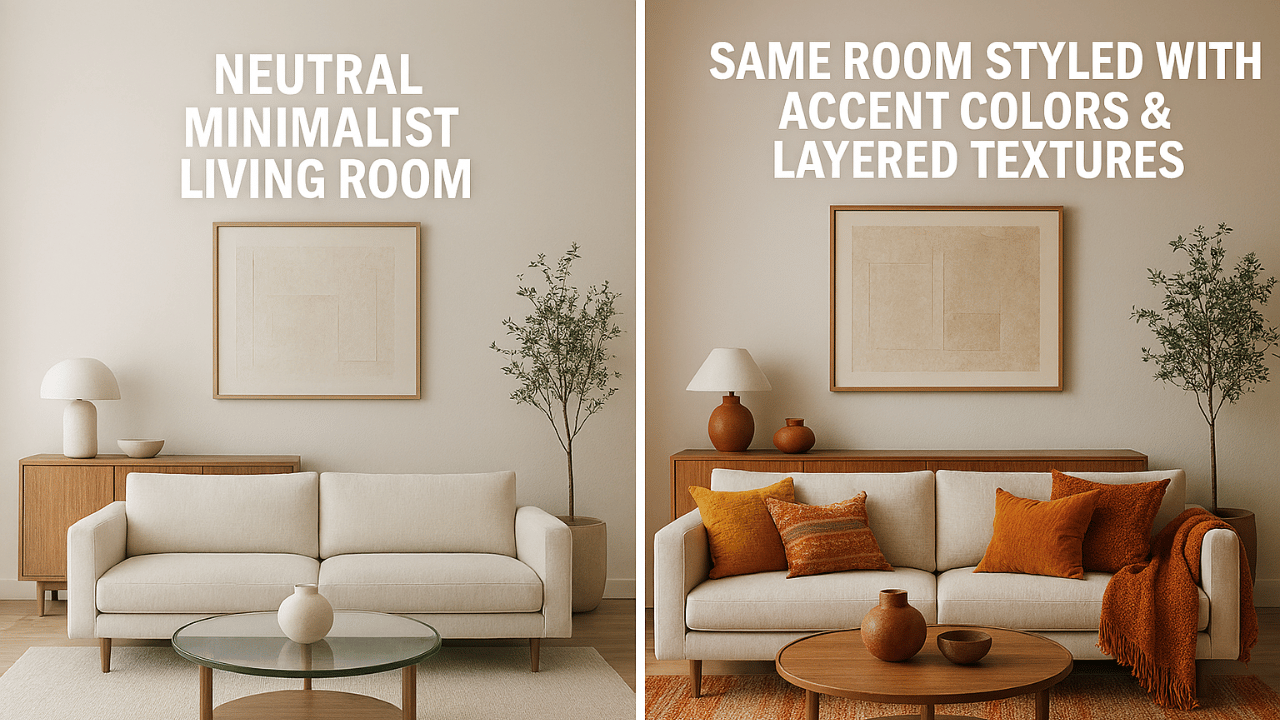
Integrating Modern Furniture with Existing Decor
One of the strengths of modern furniture is its versatility, allowing it to be seamlessly integrated into various existing decor styles. Whether your home has a traditional, bohemian, or eclectic aesthetic, modern pieces can provide a fresh update without requiring a complete overhaul.
- Mixing Styles: Combine a modern sofa with antique side tables, or a sleek dining table with vintage chairs. The contrast can create a dynamic and personalized look.
- Color Harmony: Choose modern pieces in colors that complement your existing palette. Neutrals are always a safe bet, but a well-chosen accent color can tie disparate elements together.
- Scale and Proportion: Pay attention to the size of the modern furniture in relation to your room and other pieces. Modern designs often have a lighter visual footprint, which can help balance heavier, more traditional items.
- Creating Focal Points: A striking modern armchair or a unique coffee table can serve as a focal point, drawing the eye and adding a contemporary touch to a more traditional setting.
- Accessorizing: Use modern accessories like abstract art, geometric sculptures, or minimalist lighting to reinforce the contemporary aesthetic and bridge the gap between different styles.
The key is to create a dialogue between the old and the new, ensuring that each piece contributes to a cohesive and harmonious overall design. Modern furniture, with its clean lines and timeless appeal, can act as a unifying element, bringing a sense of freshness and sophistication to any home.
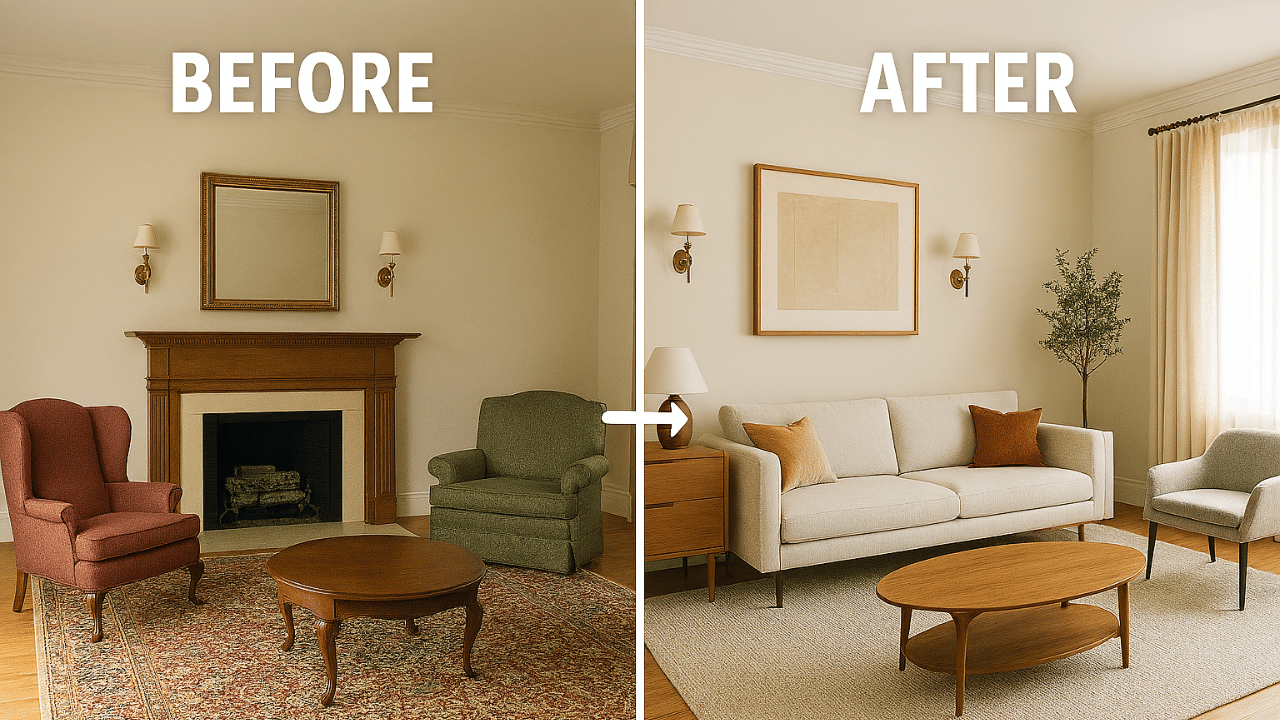
The Future of Modern Furniture in the UK
The future of modern furniture in the UK is poised for continued innovation, driven by evolving consumer demands and technological advancements. We can expect to see:
- Increased Customization: More options for personalized furniture, from modular designs to bespoke pieces tailored to individual needs and preferences.
- Advanced Materials: Development of new sustainable materials and smart materials with integrated technology, offering enhanced durability, comfort, and functionality.
- Circular Economy Principles: A greater emphasis on furniture designed for disassembly, repair, and recycling, promoting a more sustainable consumption model.
- Augmented Reality (AR) and Virtual Reality (VR) Shopping: Enhanced online shopping experiences that allow consumers to visualize furniture in their homes before purchase, improving decision-making and reducing returns.
- Health and Well-being Focus: Furniture designed with ergonomics, air quality, and mental well-being in mind, creating healthier and more comfortable living environments.
These developments will further solidify modern furniture’s role as a dynamic and responsive category, continually adapting to meet the challenges and opportunities of contemporary living in the UK. The emphasis will remain on creating beautiful, functional, and responsible pieces that enhance the quality of life for homeowners across the country.
Conclusion
Modern furniture in the UK represents a commitment to thoughtful design, blending aesthetic simplicity with practical innovation. By understanding its core principles, key trends, and how to integrate it effectively into diverse home types, homeowners can create spaces that are not only visually stunning but also highly functional and sustainable.
Heaven & Homes is dedicated to providing high-quality, eco-conscious modern furniture that meets these evolving needs, helping you shape living environments that are truly reflective of modern British living. Our curated collection embodies the essence of contemporary design, offering pieces that are built to last, designed to impress, and loved by homeowners across the UK. Embrace the modern aesthetic and transform your home into a haven of style, comfort, and sustainability.

Frequently Asked Questions
Modern furniture in the UK is characterized by clean lines, functionality, natural materials, and minimalist aesthetics. It often includes multi-functional pieces designed to maximize space while maintaining a stylish and uncluttered look.
Modern furniture refers to a specific design movement from the late 19th to mid-20th century, emphasizing simplicity and functionality. Contemporary furniture is broader, reflecting current trends, which may or may not align with modernist principles.
Popular trends include sustainable and eco-friendly materials, multifunctional designs, biophilic elements, smart technology integration, textural richness, and softer curved forms in sofas and chairs.
For compact urban apartments, space-saving furniture such as sofa beds, nesting tables, modular shelving, and light-colored designs help maximize space and create an open feel.
Suburban homes often benefit from larger statement pieces like sectional sofas, durable family-friendly fabrics, and furniture layouts that define open-plan living spaces while maintaining flexibility.
Yes, modern furniture pairs beautifully with traditional homes. Clean-lined sofas, glass or metal tables, and minimalist lighting can complement historic architecture, creating a stylish blend of old and new.
Modern furniture often uses solid woods like oak and walnut, metals like steel and aluminum, tempered glass, and upholstery fabrics such as velvet, linen, and wool. Sustainable and recycled materials are also increasingly popular.
Neutral bases like whites and greys create a clean backdrop, while accent colors (deep blues, greens, mustard) and layered textures (velvet, ribbed wood, glass, woven rugs) add warmth and depth to minimalist spaces.
You can blend modern pieces with traditional or eclectic styles by maintaining color harmony, balancing scale, and using modern accessories like geometric lighting or abstract art to unify the look.
The future includes more customization, sustainable and smart materials, circular economy practices, AR/VR shopping experiences, and designs that prioritize health, well-being, and long-term durability.
